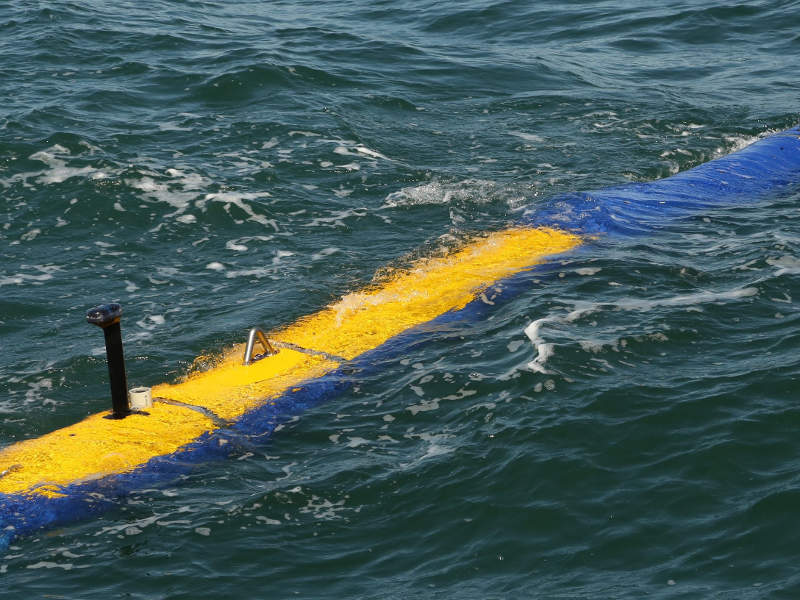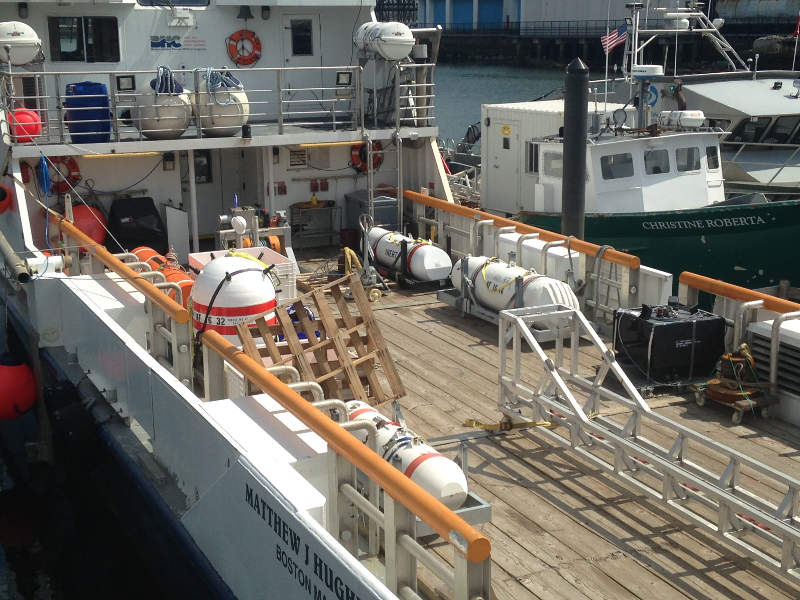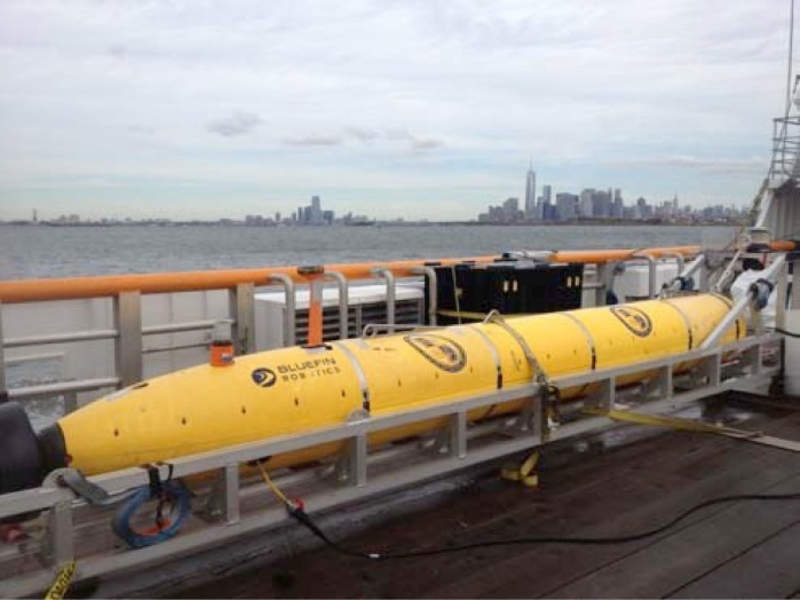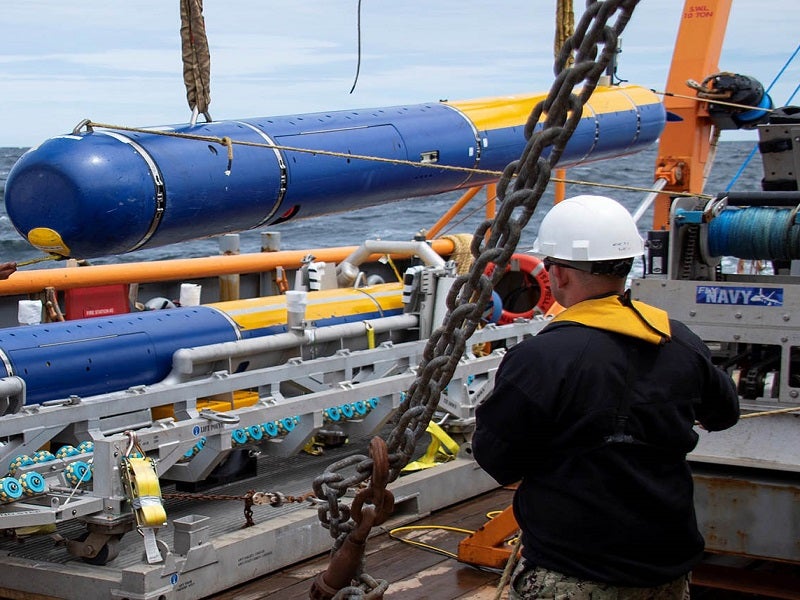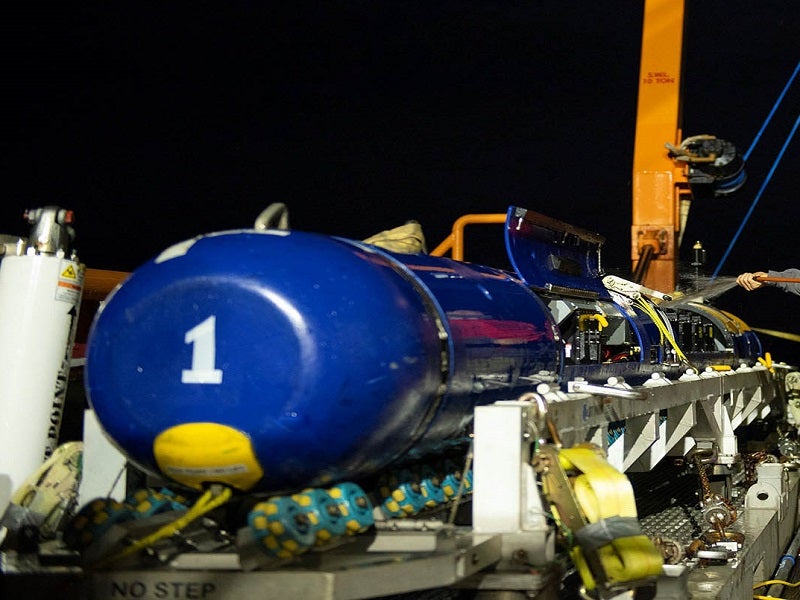The Knifefish mine countermeasure (MCM) unmanned undersea vehicle (UUV) is designed and built by General Dynamics Mission Systems’ subsidiary Bluefin Robotics to improve the US Navy’s mine hunting capability.
The high-speed UUV is intended to be operated in coordination with the US Navy’s Littoral Combat Ship (LCS) MCM mission package. It can also be deployed from other naval surface ships.
The UUV’s mission capabilities include detection, identification and classification of floating or buried naval mines in large volumes at various depths, including on the seafloor. The UUV also provides intelligence support for other mine warfare systems.
Knifefish UUV development and testing
A scale model of the Knifefish was unveiled in April 2012. The UUV passed its preliminary design review in July 2012, followed by its critical design review in January 2013. It entered the engineering and manufacturing development phase in March 2013.
The UUV configuration item test, which concluded in August 2013, involved testing and verification of the propulsion systems, payload components and software interface components.
Together, Bluefin Robotics and the Naval Research Laboratory conducted a long-endurance test on the Reliant UUV, a prototype of Knifefish. The test ran for more than 100 hours from Boston to New York in October 2013.
The US Navy and General Dynamics Mission Systems Knifefish team carried out at-sea mine-hunting testing of the vehicle off the coast of Boston in March 2017. The vehicle successfully engaged the US Navy’s mine test targets submerged at various depths during the tests.
The Knifefish team completed contractor trials in October 2017, while the formal sea acceptance testing was completed by the US Navy in June 2018. The team also completed initial Knifefish training for the first group of Navy fleet operators in the same month.
The tests were conducted using the US Navy mine test targets, high-clutter environments and multiple simulated minefields.
The Knifefish programme received Milestone C approval in August 2019, a critical step that allowed it to transition to the production and deployment phase. General Dynamics Mission Systems received a contract worth $44.6m from the US Navy for the low-rate initial production (LRIP) of five Knifefish systems following the Milestone C authorisation. The first Knifefish surface mine countermeasure (SMCM) UUV under the LRIP contract was delivered to the US Navy in March 2021.
The US Navy awarded a modification contract worth $13.5m for the Knifefish programme in October 2020. The contractual scope included continued engineering support, development, testing and production.
Furthermore, the company received a contract worth $72.8m to retrofit five Block 0 Knifefish UUV systems, comprising ten vehicles, to upgrade them to Block I configuration in June 2021. The ten Knifefish SMCM UUVs will be upgraded and re-delivered in Block 1 configuration, which will enable improved performance at greater depths as well as the identification of more complex target environments. The upgraded Block 1 configuration will also provide more precise localisation capabilities.
General Dynamics Mission Systems opened a new UUV manufacturing facility at its Taunton, Massachusetts, facility in August 2021. The UUV manufacturing and assembly centre of excellence is dedicated to the Knifefish and Bluefin Robotics UUV range.
Knifefish UUV design and features
The Knifefish UUV design is based on the Bluefin-21 deep-water autonomous underwater vehicle (AUV). The system comprises two heavyweight UUVs as well as an operator console, support container, vehicle maintenance cradle, base pallet and spare battery system.
Featuring an open-architecture design, the Knifefish underwater vehicle can be integrated with a variety of mission-specific payload systems. It measures 264in (6.7m) in length, 21in (0.53m) in diameter and weighs approximately 920kg.
The UUV’s nose section allows it to glide to the water surface during the recovery process, while its tail cone incorporates propulsion and steerage systems.
A data acquisition system and computer placed in the middle section provide autonomous operating and data processing capabilities.
Sensors and communications on board Knifefish UUV
The Knifefish UUV incorporates low-frequency broadband synthetic aperture sonar, two-way iridium communications, graphical user interface software tools and specialised sensors.
It also features acoustic payloads such as a reacquisition sensor, low-frequency broadband sonar, transmitter and towed receiver array.
The sonar system is used to detect and track mines and mine-like objects in the sea. The acoustic information is converted into digital data and stored in the UUV’s database and analytical computer, which features ultra-high-density data storage.
The information is then transmitted to the launch ship using 3Pi’s high-bandwidth panel array telemetry system through standard Ethernet interfaces.
Propulsion and performance
The Knifefish MCM UUV’s sonar and electronics systems are powered by lithium-ion batteries.
The UUV uses propellers to sail through the water and is capable of operating autonomously for approximately 16 hours.
Contractors involved with the Knifefish programme
The Naval Sea Systems Command of the US Navy selected General Dynamics Advanced Information Systems as the prime contractor to develop Knifefish as part of its Surface Mine Countermeasure Unmanned Underwater Vehicle programme in September 2011.
Other contractors involved with the Knifefish programme are Bluefin Robotics, Ultra Electronic Ocean Systems, 3 Phoenix, General Dynamics Information Technology, Oceaneering International, ASRC Research Technology Solutions, Metron and the Applied Research Laboratory at Penn State University.
Bluefin Robotics was responsible for designing and building the vehicle under a subcontract from General Dynamics.

